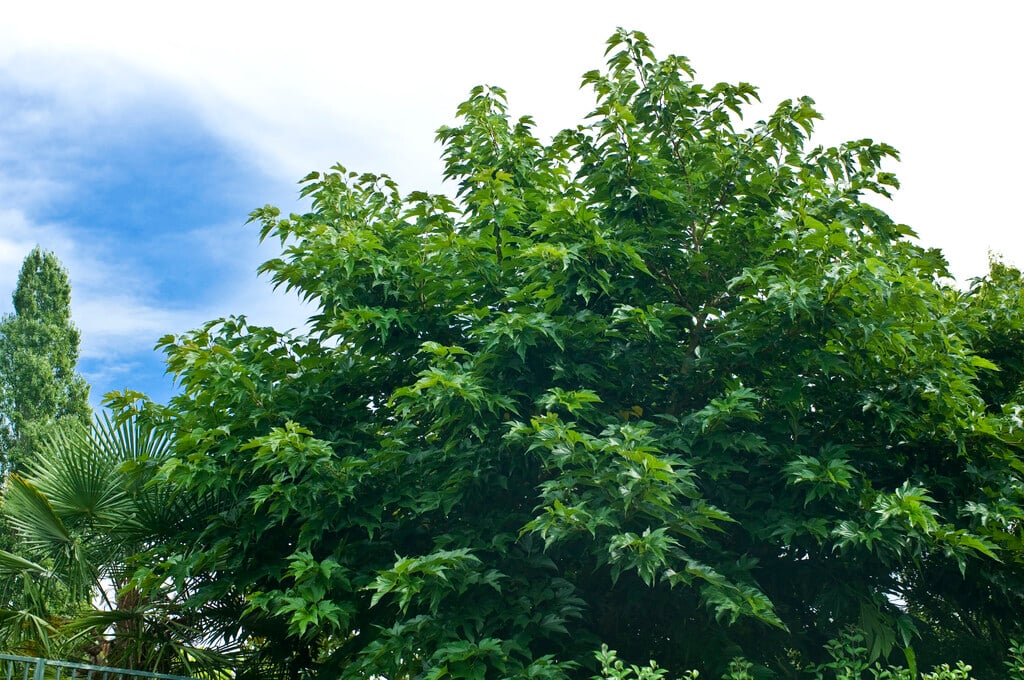Morus alba
white mulberry
A small to mid-sized deciduous tree, with a spreading habit and ovate to heart-shaped, glossy, toothed green leaves, turning pale yellow in autumn. Pale green catkins are produced in late spring and early summer, followed by edible, raspberry-like fruits that begin white and develop to reddish-pink or near-black. Silkworms are traditionally fed on the leaves of this tree
Size
Ultimate height
8–12 metresTime to ultimate height
20–50 yearsUltimate spread
Wider than 8 metresGrowing conditions
Moisture
Moist but well–drainedpH
Acid, Alkaline, NeutralColour & scent
| Stem | Flower | Foliage | Fruit | |
| Spring | Green | Green | ||
|---|---|---|---|---|
| Summer | Green | Green | White Pink Red Black | |
| Autumn | Green Yellow | White Pink Red Black | ||
| Winter |
Position
- Full sun
Aspect
South–facing or West–facing
Exposure
Sheltered Hardiness
H5Botanical details
- Family
- Moraceae
- Native to GB / Ireland
- No
- Foliage
- Deciduous
- Habit
- Spreading branched
- Genus
Morus are deciduous trees and shrubs with broadly ovate, sometimes deeply lobed leaves and inconspicuous green flowers followed by usually edible white, red or black fruit
- Name status
Correct
- Plant range
- China
How to grow
Cultivation
Grow in moist but well-drained, humus-rich, fertile soil in full sun, with shelter from cold, dry winds. See mulberry cultivation for further advice
Propagation
Propagate by seed, by semi-ripe cuttings in summer, or by hardwood cuttings in autumn
Suggested planting locations and garden types
- Architectural
- Cottage and informal garden
- Wildlife gardens
- Low Maintenance
- Edible fruit
Pruning
Pruning group 1, in late autumn or early winter to avoid bleeding
Pests
Generally pest-free
Diseases
May be susceptible to mulberry leaf spot, mulberry canker, coral spot, powdery mildews and honey fungus (rarely)
Get involved
The Royal Horticultural Society is the UK’s leading gardening charity. We aim to enrich everyone’s life through plants, and make the UK a greener and more beautiful place.
